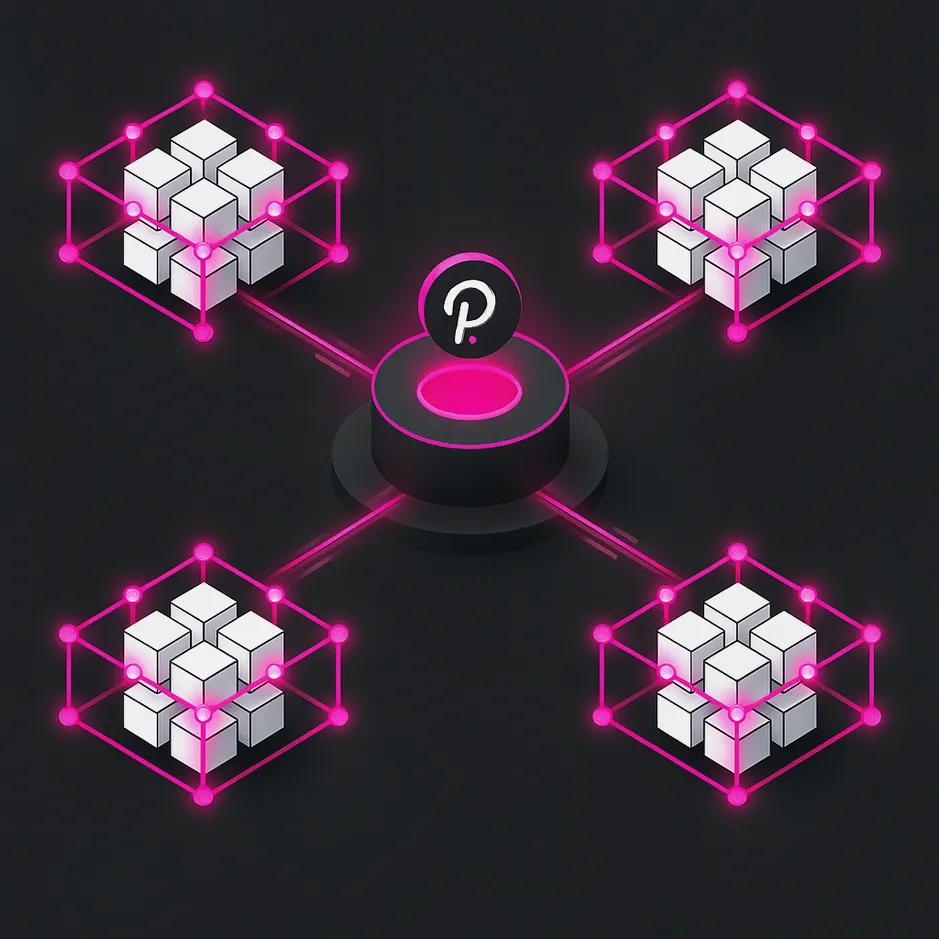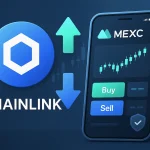If you’ve been circling the question “What is Polkadot(DOT)”, you’re really asking how the next wave of crypto aims to make blockchains talk to each other securely. Polkadot is a network of many blockchains—specialized chains called parachains—united by a central hub known as the Relay Chain. Instead of one chain trying to do everything, Polkadot enables many chains to do specific things well, while still sharing security and communicating across ecosystems.
Polkadot’s vision traces back to Dr. Gavin Wood (co‑founder of Ethereum and author of the Yellow Paper), who helped launch the Web3 Foundation and Parity Technologies. The thesis is simple yet ambitious: a multi‑chain future where apps, assets, and data move freely and safely across different blockchains.
Quick definition
- Polkadot is a layer‑0 network that provides shared security and cross‑chain messaging for many layer‑1 blockchains (parachains).
- DOT is the native token used for staking, governance, and bonding resources.
- Developers build specialized chains for DeFi, identity, gaming, privacy, and more—and they interoperate from day one.
How Polkadot works under the hood
Polkadot’s architecture is designed for speed, parallelism, and security:
- Relay Chain: The minimal, highly optimized base layer that handles consensus, validator coordination, and cross‑chain messaging. It doesn’t run smart contracts directly; it keeps security lean and throughput high.
- Parachains: Independent blockchains tailored for specific use cases (like DeFi, NFTs, privacy, or EVM compatibility). They run in parallel, so the network scales horizontally.
- Parathreads: Pay‑as‑you‑go chains that share blockspace when needed—ideal for startups and lighter workloads.
- Validators, Nominators, Collators, Fishermen:
- Validators secure the network by validating blocks and participating in consensus.
- Nominators back validators with staked DOT and share in rewards.
- Collators maintain parachains, producing candidate blocks.
- Fishermen monitor for malicious behavior.
- XCM (Cross‑Consensus Messaging): A protocol that lets chains exchange messages and assets. Think of it as native cross‑chain composability, not just wrapped tokens.
The result is a modular ecosystem where innovation can happen at the chain level without sacrificing shared security or smooth interoperability.
Polkadot 2.0 and Agile Coretime in plain English
Polkadot originally used parachain slot auctions to allocate blockspace. In the Polkadot 2.0 era, the network moved to Agile Coretime—a market for blockspace that makes capacity more flexible:
- Coretime: The measurable compute/validation time allocated to chains.
- Agile marketplace: Teams can reserve continuous or burst capacity, instead of committing to long auction leases.
- Better capital efficiency: Builders can scale capacity dynamically with demand, improving cost management and agility for real‑world apps.
For users, the takeaway is simple: expect more apps, more often, with better responsiveness to usage spikes.
DOT token utility explained
DOT isn’t just a speculative asset—it powers the network:
- Staking: Nominated Proof‑of‑Stake (NPoS) secures the Relay Chain. Token holders either run validators or nominate them. Rewards depend on staking rates, validator performance, and network parameters.
- Governance: DOT holders participate in OpenGov, voting on proposals, treasury spending, network upgrades, and parameter changes. It’s one of the most advanced on‑chain governance systems in crypto.
- Bonding and economics: DOT can be bonded for coretime usage and other network activities. Bonding signals commitment and aligns incentives.
- Fees: Network operations and some cross‑chain activities require fees, paid in DOT or chain‑specific tokens depending on context.
Note: Polkadot underwent a redenomination in 2020 (supply increased by 100x, balances scaled accordingly). Always check current tokenomics and staking parameters via official sources.
Why Polkadot matters versus other approaches
- Versus monolithic L1s: Rather than cramming everything onto one chain, Polkadot spreads workloads across specialized chains that still share security.
- Versus app‑specific rollups: Rollups rely on a base L1 for data availability and settlement, and cross‑rollup communication can be complex. Polkadot’s shared security and XCM provide native cross‑chain composability.
- Versus Cosmos‑style sovereignty: Cosmos emphasizes sovereign chains with IBC. Polkadot focuses on shared security at the base layer. Many teams choose based on security assumptions, governance preferences, and interoperability needs.
There’s no one‑size‑fits‑all. Polkadot is compelling if you want native interoperability, strong on‑chain governance, and security pooling.
Real projects to watch
- Moonbeam and Moonriver: EVM‑compatible chains on Polkadot and Kusama, respectively. Deploy Ethereum‑style contracts with native access to XCM.
- Astar: Multi‑VM smart contracts with strong Japan ecosystem ties.
- Acala: DeFi infrastructure and stablecoin experiments, plus liquid staking primitives.
- Phala Network: Confidential computing with Trusted Execution Environments.
- HydraDX: An AMM and liquidity hub tailored for multi‑asset pools.
- Interlay: Bitcoin interoperability, enabling BTC to be used in the Polkadot ecosystem.
- Parallel: DeFi and staking markets.
Each chain brings its own token economy, governance, and runtime upgrades—yet they remain interoperable through XCM.
Staking and OpenGov basics for newcomers
- Staking options:
- Run a validator (advanced, requires uptime and technical know‑how).
- Nominate validators (most users choose this path).
- Use nomination pools to stake smaller amounts of DOT collectively.
- Rewards and risks:
- Rewards scale with network parameters and validator performance.
- Slashing can occur for malicious behavior or severe downtime—choose validators carefully and diversify nominations.
- OpenGov participation:
- Vote on referenda that can upgrade the network and allocate treasury funds.
- Delegation and conviction voting let you align with experts while amplifying your influence.
Always verify steps via official docs and never share your seed phrase.
How to buy DOT safely and get fee savings
One of the easiest on‑ramps is Binance. You can create your account and enjoy a 20% trading fee discount plus up to $10,000 in benefits with the referral. Use this link and code:
- Sign up here: Binance
- Referral code: CRYPTONEWER
Simple flow for first‑timers:
1) Create your Binance account using the referral link above.
2) Complete KYC for higher limits and fiat on‑ramps.
3) Deposit fiat or crypto.
4) Buy DOT on spot markets or via card/peer‑to‑peer options.
5) For long‑term holders, consider staking options or flexible earn products. Review terms, lockups, APYs, and risks.
Pro tip: After purchase, consider self‑custody if you’re comfortable managing keys. Use reputable wallets and hardware where possible.
Wallets, custody, and tools
- Wallets:
- Polkadot.js extension: The canonical wallet for advanced users and governance participation.
- Talisman and SubWallet: User‑friendly wallets with XCM integrations and multi‑chain views.
- Ledger: Hardware wallet support for higher security.
- Explorers and analytics:
- Subscan: Block explorer for Polkadot and parachains.
- Polkassembly: Governance discussions and referendum tracking.
- Polkadot‑JS Apps: Interaction with accounts, staking, and runtime modules.
- Bridging tips:
- Prefer native XCM transfers within the Polkadot ecosystem.
- When bridging to external ecosystems (Ethereum, other L1s), use reputable bridges and double‑check asset representations.
Security reminder: test with small amounts first and verify addresses carefully.
Developer’s corner
- Substrate framework: Build blockchains with modular pallets (runtime modules). You get fine‑grained control over fees, weights, governance, and execution logic.
- Upgrades without hard forks: Runtime logic lives in Wasm stored on‑chain, enabling forkless upgrades through governance.
- Tooling stack: Rust for runtime development, ink! for smart contracts on Substrate‑based contracts pallets, EVM pallets for Solidity compatibility.
- Polkadot 2.0’s Agile Coretime: Plan capacity around product milestones and seasonal user demand instead of committing to long leases.
If you’re building, start with the Substrate docs, templates, and community guides—then graduate to testnets and pilot deployments.
Common questions about What is Polkadot(DOT)
- Is DOT the same as a parachain token? No. DOT is the native token of the Polkadot Relay Chain. Parachains often have their own tokens with separate utilities.
- Can parachains talk to Ethereum? Yes, via bridges and EVM‑compatible parachains like Moonbeam. Native XCM is for Polkadot ecosystem chains; external bridging connects to non‑Polkadot networks.
- How are upgrades handled? Through OpenGov referenda. Polkadot is known for forkless, on‑chain upgrades.
- Is staking custodial? It can be either. You can nominate from self‑custody wallets or use exchange‑based staking. Understand trade‑offs in control, risk, and flexibility.
- What changed in Polkadot 2.0? Blockspace shifted to a coretime market, enabling more flexible capacity allocation and potentially faster time‑to‑market for new chains.
Real‑world use cases today
- Cross‑chain DeFi: Swap and route liquidity across specialized chains, reducing fragmentation.
- On‑chain identity: Reusable credentials for compliance‑aware DeFi and regulated markets.
- Gaming and assets: High‑throughput item mints on dedicated chains, with asset movement to marketplaces on other parachains.
- Privacy‑preserving compute: Confidential smart contracts and data storage for sensitive workloads.
- Enterprise workflows: Supply chain, provenance, and audit trails where multiple parties must interoperate under shared security guarantees.
Interoperability isn’t a buzzword here. XCM lets chains coordinate state changes across domains with strong guarantees.
Getting started right now
- Learn the basics at the official site: polkadot.network
- Explore code and docs: docs.substrate.io and wiki.polkadot.network
- Track governance: polkassembly.io
- Monitor the chain: subscan.io
- Buy DOT with fee savings: use Binance and enter referral code CRYPTONEWER for 20% fee discount and up to $10,000 in benefits
Whether you’re here to stake, build, or just understand what makes Polkadot different, answering “What is Polkadot(DOT)” opens up a broader conversation about how blockchains can finally work together without compromising security or sovereignty.





